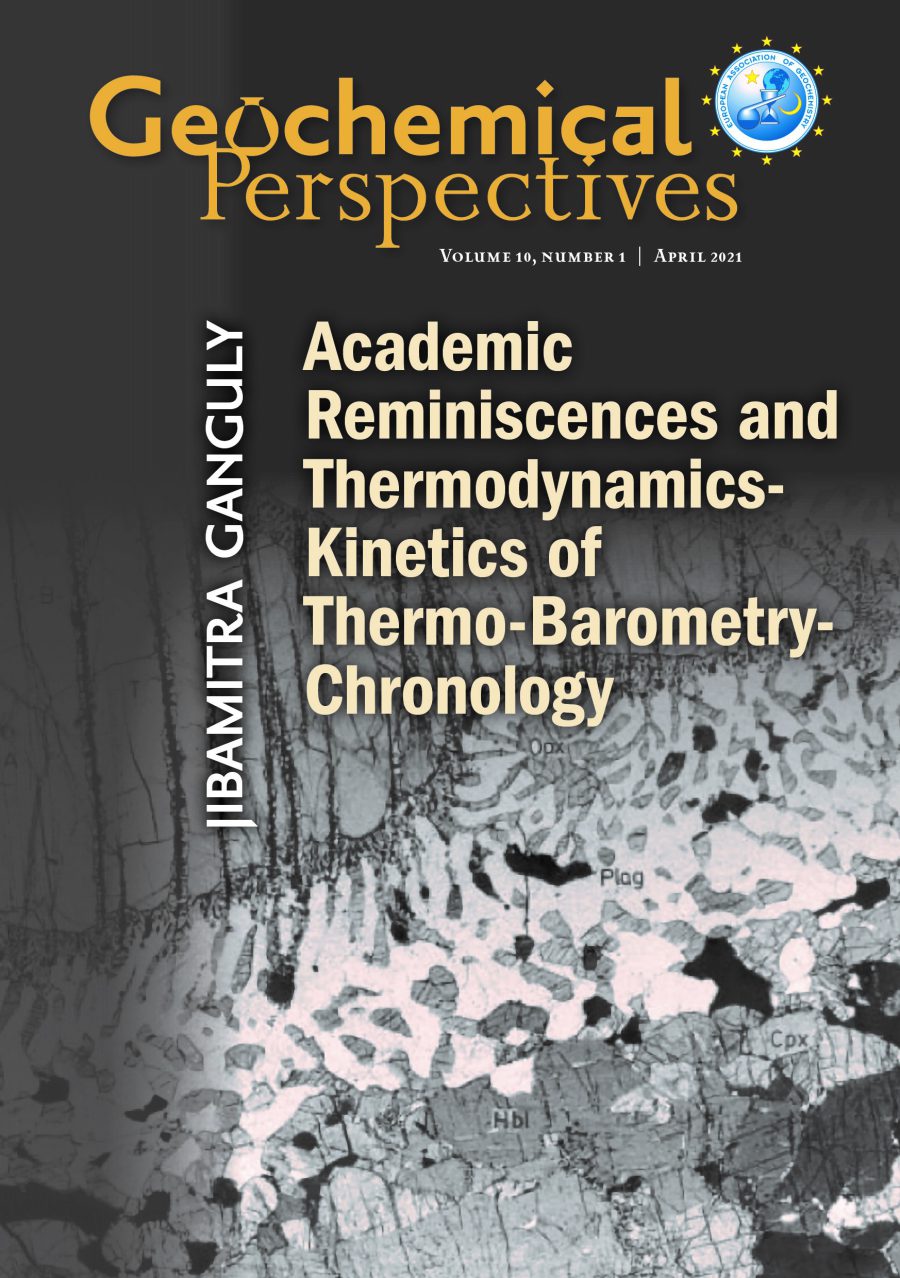
Academic Reminiscences and Thermodynamics-Kinetics of Thermo-Barometry-Chronology
by Jibamitra Ganguly1doi: 10.7185/geochempersp.10.1 | Volume 10, Number 1 (pages 1-144)
Abstract
This article has three major components that include, in addition to the technical aspects, reminiscences of my academic upbringing, my move to the USA from India, and my professional career. I have recounted many stories that I hope convey some sense of time, especially in these two countries with vastly different cultures, my personal journey with its ups and downs and how I made the transition to an academic career path in USA even though that was not in my future plan as a young man.
The development of the field of thermobarometry and its integration with diffusion and crystal kinetic modelling of compositional zoning (or lack thereof) and cation ordering in minerals have led to important quantitative constraints on the pressure-temperature-time evolution of terrestrial rocks and meteorites. I review the historical developments in these areas and a segment of my own research spanning the period of 1964-2021. The foundational works of the thermometry of metamorphic rocks and palaeothermometry were laid at the University of Chicago around 1950. Subsequently, the synergetic growth of thermodynamics and experimental studies in petrology in the 1960s and 1970s, along with the introduction of electron microprobe as a nondestructive analytical tool with micron scale resolution, gave a major boost to the field of thermobarometry. There were also significant new developments in the field of thermodynamics of solid solutions in the petrology community and demonstration from observational data, countering strong scepticism, that the principles of classical thermodynamics were applicable to “complex natural systems”. The section on thermodynamic basis of thermobarometry concludes with a discussion of the thermodynamics of trace element and single mineral thermometry.
I further deal with the experimental protocols, along with selected examples, for phase equilibrium studies that provide the bedrock foundation for the field of thermobarometry based on elemental compositions of coexisting minerals in a rock. It is followed by an account of the controversies and international meetings relating to the aluminum silicate and peridotite phase diagrams that play crucial roles in the thermobarometry of metamorphic rocks and mantle xenoliths, respectively. The construction of quantitative petrogenetic grids to display stability relations of minerals in multicomponent–multiphase systems came into play in the field of metamorphic petrology in the mid-1960s and early 1970s. Augmented by experimental data, these petrogenetic grids led to important discoveries about the P-T-f(O2) and bulk compositional controls on the stability of certain “index” minerals that are used to define metamorphic isograds and different types of regional metamorphism; one such grid also opened up a new field that came to be known as ultra-high temperature metamorphism. The construction of petrogenetic grids has now evolved to computer based calculations of complex equilibrium P-T phase diagrams, commonly referred to as “pseudosections”, by minimisation of Gibbs free energy of a system with fixed bulk composition. I discuss these historical developments and modern advancements. Subsequently I highlight some aspects of thermobarometry and diffusion kinetic modelling of selected natural samples along with their broader implications and present a critical discussion of different protocols for thermobarometry of natural assemblages.
Following up on the introductory historical perspective of development of palaeothermometry, I discuss the modern advancements using density functional theory (DFT). Examples of DFT based calculations have been shown for hydrogen isotope fractionation in mineral-water/hydrogen systems and “clumped isotope” thermometry. The hydrogen isotope fractionation data led the development of new low temperature palaeothermometers using serpentine-talc/brucite mineral pairs. These results enable simultaneous solutions of both temperature and source of fluid in the serpentinisation process of rocks.
The final section is devoted to high temperature thermochronology dealing with the problems of closure temperature of decay systems in minerals and the use of bulk and spatial resetting of mineral age according to a specific decay system to determine cooling rates of the host rocks. Complications arise in the interpretation of mineral ages determined by such decay systems as 176Lu-176Hf or the short- lived system 53Mn-53Cr in which the parent nuclide has a much lower closure temperature than the corresponding daughter product. Numerical simulations help explain the discrepancy between the 176Lu-176Hf and 147Sm-143Nd ages of garnets in metamorphic rocks and enable construction of the entire T-t cycle from the discrepant ages and some additional constraints.

